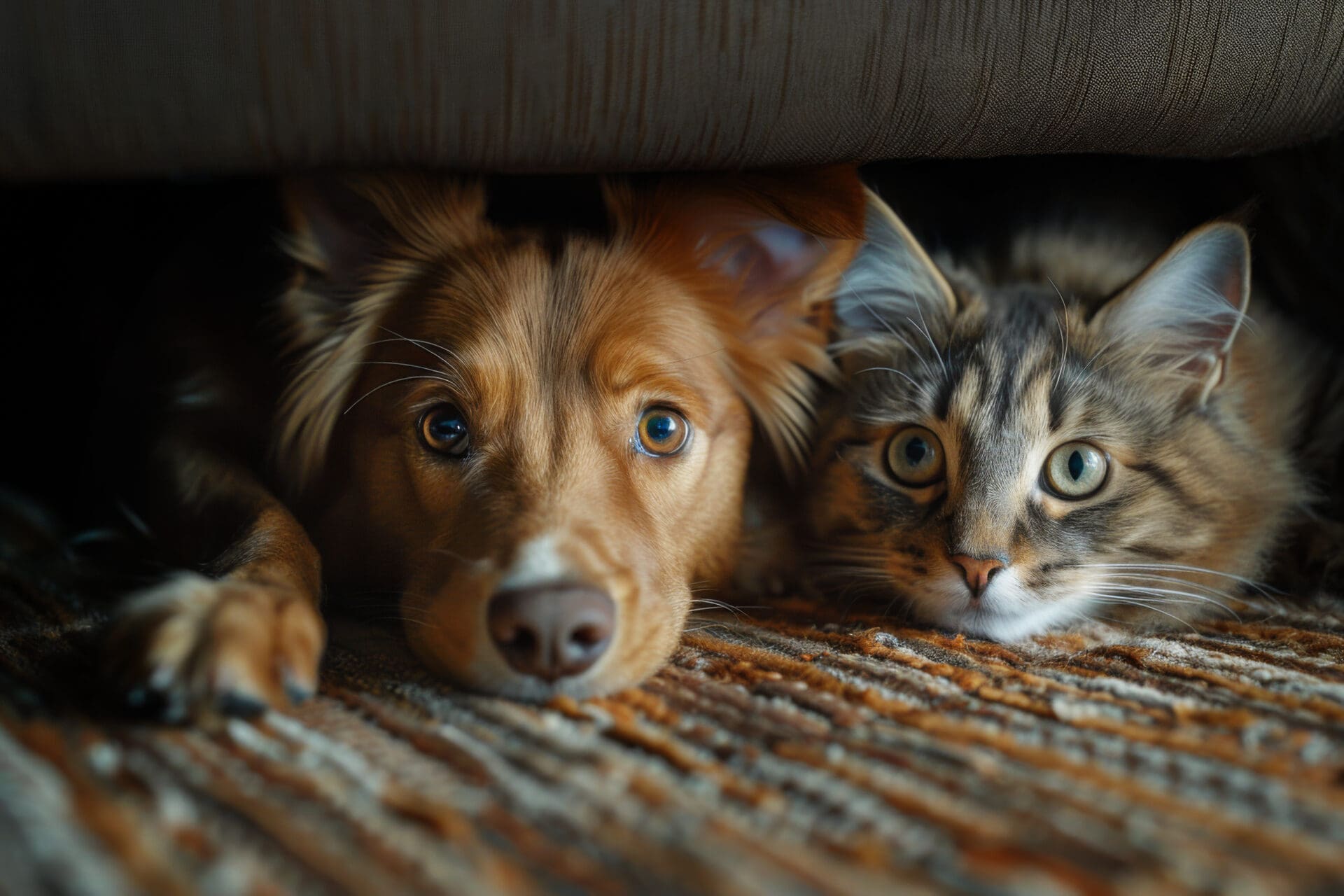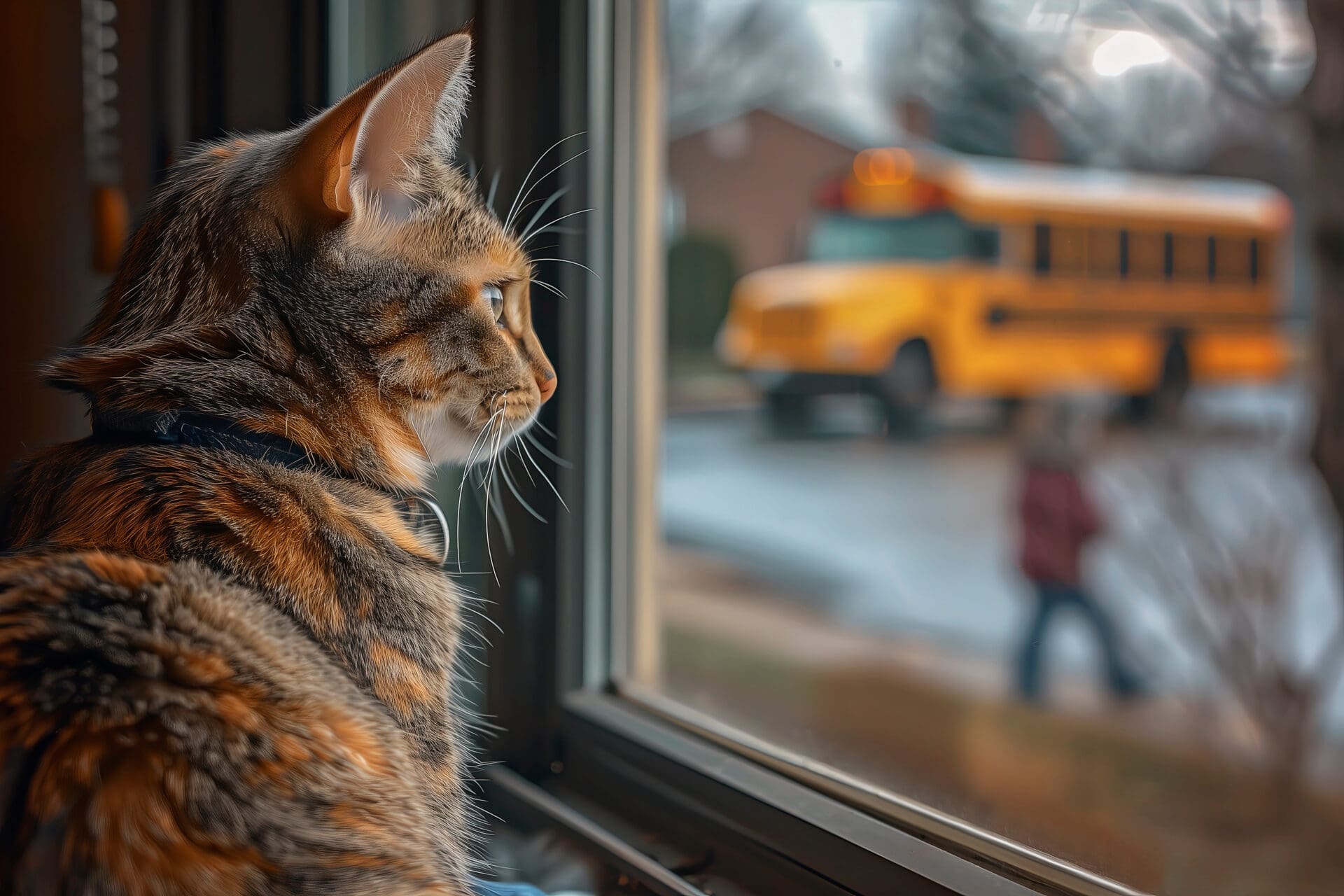As summer winds down and the back-to-school season begins, it’s not just humans who feel the change—our furry friends do too. Pets, especially dogs and cats, can experience pet anxiety when their routines are disrupted. The return to school can lead to stress, separation anxiety in dogs, and even separation anxiety in cats. In this blog, we will explore how the back-to-school transition affects pets and provide effective strategies to help them adjust smoothly.
Understanding the Impact of Back-to-School Season on Pets

During the back-to-school season, pets often notice a sudden decrease in attention and activity as their human companions become busy with new schedules. This change can cause stress in dogs and stress in cats, leading to increased pet anxiety. The hustle and bustle of getting ready for school, combined with longer periods of solitude, can make pets feel lonely and anxious.
What Triggers Back-to-School Anxiety in Pets?
Several factors contribute to back-to-school pet anxiety. A sudden shift in routine is a significant trigger. Dogs and cats thrive on consistency; any sudden changes can make them feel insecure. For dogs, this could mean more extended periods of being left alone, leading to separation anxiety in dogs. For cats, this could result in decreased interaction and stimulation, increasing separation anxiety in cats.
Recognizing the Signs of Stress in Dogs

If your dog is experiencing anxiety due to the back-to-school season, they may exhibit various signs of distress. Common indicators of dog anxiety include:
- Excessive Barking or Whining: When left alone or anticipating separation.
- Destructive Behavior: Chewing furniture, shoes, or other objects when anxious.
- Pacing and Restlessness: Unable to settle down or constantly moving around.
- Loss of Appetite: Refusing food or treats is often a sign of stress.
- Increased Licking or Grooming: An obsessive habit that may indicate anxiety.
Understanding these signs can help you act quickly to alleviate your dog’s stress during the back-to-school transition.
Identifying Stress in Cats

While cats are often considered more independent than dogs, they are just as susceptible to anxiety. Signs of stress in cats due to the back-to-school season can include:
- Hiding: Retreating to a quiet spot away from family members.
- Changes in Grooming Habits: Overgrooming or neglecting grooming altogether.
- Litter Box Issues: Urinating or defecating outside the litter box.
- Aggression: Increased irritability or aggressive behavior toward people or other pets.
- Loss of Appetite or Vomiting: Stress can affect a cat’s eating habits and digestive health.
Recognizing these signs early on can help mitigate the effects of cat anxiety and make the transition smoother.
Proven Strategies to Reduce Back-to-School Stress in Pets
To help pets navigate the back-to-school transition, it’s essential to adopt strategies that address their emotional and physical needs. Here are some practical back-to-school tips for pets to help ease their anxiety:
Understand Their Feelings
Acknowledging that pets have emotions similar to humans is crucial. Being aware of your pet’s needs and feelings can help you address their pet anxiety more effectively. Talk to them, provide reassurance, and show affection, especially during the early days of the transition.
Stick to a Routine
Pets thrive on routine. Maintain consistent feeding, walking, and playtimes to provide stability and minimize dog anxiety or cat anxiety. If the morning routine changes, ensure that the rest of the day remains as predictable as possible for your pet.
Ensure Plenty of Exercise
Physical activity is a great way to reduce stress in dogs and stress in cats. Regular exercise, such as walks, fetch games, or interactive play sessions, helps burn off excess energy and reduces anxiety. For dogs, an extra walk or playtime session before leaving for the day can help them feel more relaxed and content.
Create a Comfortable and Stimulating Home Environment
Make your home a sanctuary where your pet feels safe and secure. Provide them with a comfortable bed, favorite toys, and access to natural light. Consider using pet-friendly interactive toys or puzzles to keep them mentally stimulated. For both cats and dogs, having a window view or access to a cozy corner can significantly reduce anxiety.
Consider Hiring a Walker or Cat Sitter
If your pet struggles with longer periods of solitude, consider hiring a dog walker or a cat sitter. A mid-day visit can break up the day and provide your pet with the interaction and activity they need. This is particularly helpful for pets dealing with separation anxiety in dogs or separation anxiety in cats.
Helping Your Pet Adjust Smoothly
Helping pets manage their anxiety during the back-to-school season is all about understanding, routine, exercise, and comfort. By recognizing the triggers and signs of stress and implementing these back-to-school tips for pets, you can help create a peaceful and balanced environment for your furry friends.
At Spall & Harvey Animal Hospital, we understand how much your pets mean to you. If you notice signs of anxiety in your dog or cat or need personalized advice to help your pet adjust, our team is here to support you. Visit us at for a consultation, and let us help your pet lead a happier, healthier life during this transition.
